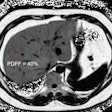Tuesday, November 27 | 11:50 a.m.-12:00 p.m. | SSG10-09 | Room E353A
Combining a deep-learning algorithm with quantitative MRI could help advance treatment and survival for patients with glioblastoma multiforme (GBM).Glioblastoma multiforme is the most common primary brain tumor in adults; those with the disease have a poor prognosis and a median survival of less than two years. However, GBMs with mutations in isocitrate dehydrogenase (IDH) are associated with improved survival, and patients may benefit from maximal resection, including the nonenhancing tumor component. The challenge for clinicians is that IDH status is sometimes only available after resection.
In this presentation, Dr. Evan Calabrese, PhD, from the University of California, San Francisco, will describe how he and fellow researchers analyzed preoperative MR images from 13 patients with confirmed IDH-mutant GBMs and 99 patients with IDH-wild-type GBMs. Their MRI protocol included T1-weighted, T2-weighted, fluid-attenuated inversion-recovery (FLAIR), postcontrast T1-weighted, and diffusion-tensor imaging (DTI).
They used a convolutional neural network-based deep-learning algorithm to generate automated volumetric segmentation of the three key GBM components that are visible on MRI: enhancing tumor core, nonenhancing tumor, and necrosis. They then compared tumor compartment volume fractions and DTI parameter values between the two GBM types.
IDH-mutant GBMs demonstrated significantly lower enhancing tumor fraction, compared with wild-type GBMs, as well as lower volume ratios of enhancing to nonenhancing tumor and enhancing tumor to necrosis. The findings support the theory that IDH-mutant GBMs are secondary GBMs that develop from lower-grade gliomas.
"Our work suggests that deep-learning based quantitative MR image analysis may be useful for distinguishing IDH-mutant GBMs on preoperative imaging," Calabrese and colleagues wrote in their abstract.


.fFmgij6Hin.png?auto=compress%2Cformat&fit=crop&h=100&q=70&w=100)





.fFmgij6Hin.png?auto=compress%2Cformat&fit=crop&h=167&q=70&w=250)











